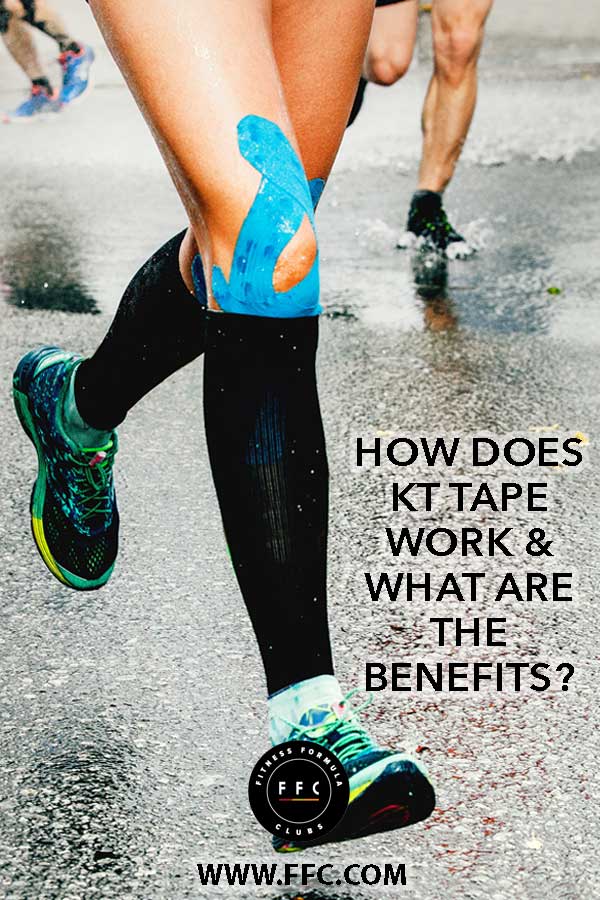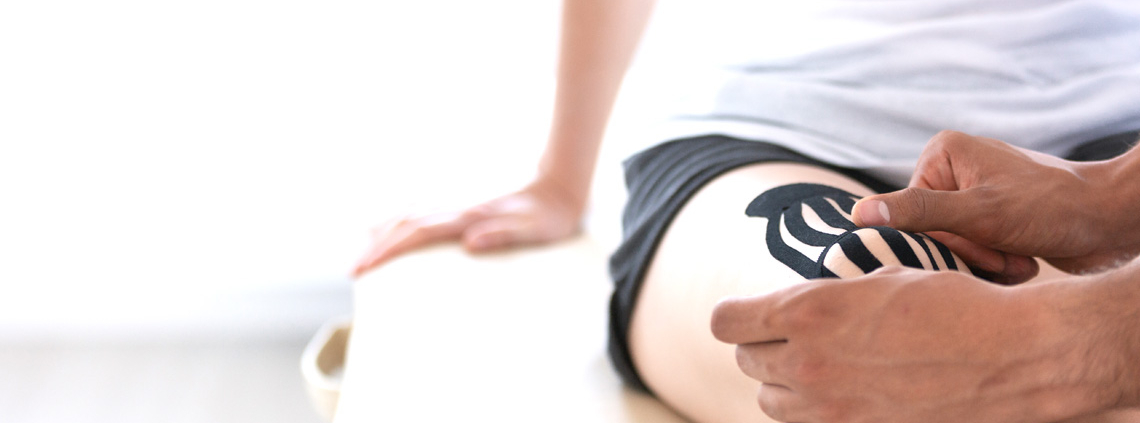How Does KT Tape Work & What Are Its Benefits?
If you are involved in fitness in any way, you’ve probably heard of KT tape. But how does KT tape work? What is it used for? KT tape was developed by chiropractor Dr. Kenzo Kase in Japan in the 1970s. The use and popularity of the tape has risen in recent years due to the endorsements from doctors, physical therapists, and pro athletes such as NBA all-star James Harden and 3x Olympic Gold medalist Kerri Walsh Jennings.
Unlike standard athletic taping, which is rigid and locks a joint and its musculature in place, KT tape is elastic and allows the body to move through its natural range of motion. Once applied, KT tape is usually good for 3-4 days and is waterproof (so yes, you can shower!). Kinesio tape is sold commercially and most likely in your local gym (FFC carries it in the sports shop).
Please note: This blog is not medical advice and is for educational purposes only. If you have any medical concerns please be evaluated by your licensed healthcare professional.
Kinesiology Tape Benefits
Kinesio tape is used for a variety of musculoskeletal issues including, but not limited to, carpal tunnel, patella tendinopathy, lateral and medial epicondylitis, and more. Depending on the technique used to apply the tapes, several benefits can be reaped. By microscopically lifting the top layer of skin from the other layers, an increase in blood circulation and drainage by the body’s lymphatic system can be created, clearing waste and potentially decreasing edema and inflammation.
This gentle lift of the skin may also decrease the pressure on pain receptors located throughout the body to provide temporary pain relief. Kinesiology tape benefits may also include helping to facilitate underactive muscles while inhibiting overactive muscles to help create balance in chronic overused areas (such as the upper trapezius muscle). Although the tape is elastic, it does, with the right tension, provide a sense of stability and protection for joints such as at the knee and ankle.
Who Can Use KT Tape?
Kinesio tape can be used by a wide variety of people, ranging from toddlers and the average working citizen to professional athletes. Those with sensitive skin or allergies should check with their dermatologist or physician before applying the tape. If skin becomes red or irritated, immediately and carefully remove tape.
Common areas of application include:
- Shoulders
- Forearms
- Wrist
- Knee
- Ankles
Have more questions about KT tape or want to set up a complimentary consultation? Email Joshua Jernigan at jjernigan@ffc.com!
Important note: Kinesio tape is not a cure for any orthopedic issues, it is simply a tool to help in your recovery. The real solution is getting to work and doing what you are designed to do – move… and move often. In the gym is where long term change is made.
Post written by Joshua Jernigan, Personal Trainer FFC Oak Park.
About Joshua
Joshua received his bachelor’s of science in kinesiology and health promotion in 2018 from the University of Kentucky and has a background in orthopedics and performance, guiding elite high school, Division I and professional athletes through rehab. He also specializes in working with the aging population to deal with post-operative shoulder, knee, hip and ankle surgeries, etc. You can set up a consultation with him by emailing him at jjernigan@ffc.com!
Sources for How Does KT Tape Work & What Are Its Benefits
Drouin, Jillian L, et al. “The Effects of Kinesiotape on Athletic-Based Performance Outcomes in Healthy, Active Individuals: a Literature Synthesis.” The Journal of the Canadian Chiropractic Association, Canadian Chiropractic Association, Dec. 2013, www.ncbi.nlm.nih.gov/pmc/articles/PMC3845470/.
Mateo, Ashley. “What Exactly Is Kinesio Tape-And Does It Really Work?” Runner’s World, Runner’s World, 11 Mar. 2019, www.runnersworld.com/health-injuries/a23791766/kt-tape/.
SAVE THIS FOR LATER ON PINTEREST




